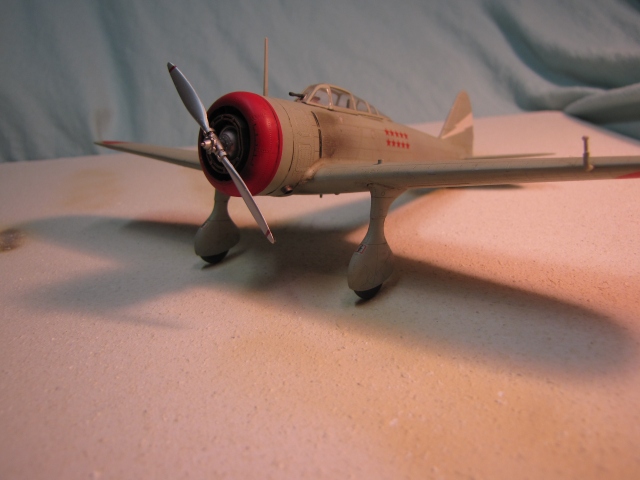The Japanese Army’s first generation of monoplane fighter was Nakajima’s Ki-27. This type entered service in 1937, saw extensive service in China and continued into World War II.
Join me for a brief look at a type that exemplified the Japanese design characteristic.
The Japanese aircraft industry had not yet earned much international respect in the 1930s. The Ki-27 makes a good case study for why; with fixed, spatted landing gear and only two 7.7 mm machine guns for armament it doesn’t seem modern like the Hawker Hurricane or Curtiss P-36 which had already entered service.
However the Nate also possessed the extreme sort of maneuverability that would be typical even of more modern Japanese designs. With very light wing loading the type was nearly as maneuverable as the bi-plane it replaced (Ki-10) and almost as fast as those “more modern” foreign types. It achieved aerial superiority over China while facing mainly older western aircraft and a few newer newer Polikarpov I-16s. When all out war erupted between Japan and the Soviet Union in Nomonhan Mongolia summer of 1939 the Japanese Army again won air superiority. Even if this war went poorly for the Japanese on the ground they dominated the air until the last few weeks when the Soviets introduced some later model I-16s with pilot armor and self sealing fuel tanks.

The two 7.7 mm MGs were in the fuselage and fired through the engine cylinders, so they’re invisible in this build.
Most of the west drew some poor conclusions from fighting in China. The Ki-27 was generally dismissed for its obsolescence by analysts who failed to consider what the next generation of Japanese designs might bring. When World War II did break out, the Ki-27 did indeed prove to be out of date; it generally performed poorly against Buffaloes in Singapore and Malaysia and P-40s over China and the Philippines. BUT, its replacement was at hand and Nakajima’s much more capable Ki-43 Oscar (along with the Japanese Navy’s A6M Zero) shredded Allied air defenses.

The Nakajima company provided a more modern design with the Ki-43 Oscar, that was replacing the Ki-27 in December of 1941 as World War II began.

Ki-27s lined up on an airfield in China.
This example is from the Hasegawa kit with Aeromaster decals. It is a Ki-27 Otsu (“B” model) flown by Warrant Officer H. Shinohara during the Nomonhan War. It is shown with ten kill marks, although WO Shinohara would amass 58 kills in three months ending with his death. He had 11 kills in one day, a record not surpassed by any Japanese pilot ever.






Considering the early design it held it own over China during the Sino-Japanese war which preceded the Start of the Rest of the expanded war in Asia.
One of the true stars of the second Sino-Japanese war and a superb aircraft. Great build Dave.
Thanks Rich. It definitely dominated the skies of China for a while! Its a nice looking plane too. Although I think it stayed in production too long, but that is the case for so many successful types.